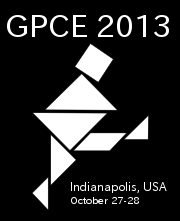First Impression
I was very lucky today to experiment with an Oculus Rift
Development Kit. By now, I am probably several months late to do an elaborate review of the packaging-installation-performance evaluation; you
already know many of that stuff from many other posts from the Oculus
community (e.g. r/oculus). However, the experience of playing with a Rift as a user was unprecedented and I believe that some thoughts are worthsharing.
Firstly,
the Rift came in a beautiful case that absolutely protects the device
and everything was included: from UK, US plugs to HDMI cable, mini-usb
and a usb-to-DVI adapter.
The professionalism that the Oculus team shows by this "product" presentation with the SDK is amazing.
Unfortunately I wasn't able to try this out at my Ubuntu laptop, as a
displayport-to-HDMI converter was necessary; so our first exploration
was made from a Sony Vaio equipped with a mainstream NVidia
GeForce 330 that did run the demos, but with the FPS (in Rift) varying from 30 to 40.
The installation was seamless. No quirks, no missing dlls (except when I
first built a demo with some needed DirectX components that come with the redistributable),
no surprises. We used the second pair of lenses that came with the Rift. The package included three pairs, A, B and C and the user is free to use which ever he likes in order to achieve the most focus possible for nearsighted people. The 1280x800 (an HD prototype is already presented) (2 displays with resolution 640x800), 32-bit colour, LCD head-display was ready to have it's gyroscope sensor calibrated.
And then the fun started with the free demos from share.oculusvr.com and www.riftenabled.com. Many hours of "playing" and experimenting with the setup followed. Among the demos, the few that I highly recommend-as a must-are the vr.training (inspired by Metal Gear Solid training levels~nostalgia alert~and highly recommended for low-end graphic systems), VR Cinema (that can load an avi, wmv or mkv and play it as if you watch it in a theater), Titans of Space (educational), Blocked In (just a presentation of a single room for an adventure game), Dreadhalls (an absolute atmospheric/horror game), Fallen Angel's Lair (demonstrating UDK, the Unreal Engine), Oculus Tuscany Demo (101 demo from Oculus), Ocean Rift (watch out for the shark) and the coasters from archivision. What will come next to our evaluation is the heavy artillery of gaming (e.g. Half Life 2 - opting in for beta from its Steam menu and by providing the "-vr" command line argument).
The simulator sickness
Before trying Rift, I was sceptical (as everyone) for the simulator sickness that occurs to the user, that results from slight disorientation as a game progresses. The user builds up discomfort from in-game locomotion, rapid rotations, fast changes in elevation etc., which are all some form of acceleration that the brain perceives but the body doesn't actually feel. Some things regarding this matter can be improved dramatically: 1) technologically (like latency and tracking precision) and 2) some other things must be taken under consideration in the game design - HCI level. The developer.oculusvr.com site has a very informative wiki page with guidelines (e.g., placement of camera, displaying text, speed of elements, flashing, providing static references like a cockpit etc. that limit the sickness effect).
Screen-door effect
The most annoying thing in the whole process of evaluation is that due to the low resolution of the displays that are extremely close to your eyes you can really see the black lines between pixels. From what I read at the community-press this effect can be eliminated with both higher resolution and better higher pixel-fill rate (to my understanding).
 |
| Packaging |
 |
| Lenses |
 |
| USB box (transfers sensor data to pc) |
 |
| Again a rear view |
 |
| Side view (controlling the distance of the headset from eyes) |
I would really recommend the Step into the Game with Oculus Rift and Unity 4.2 video from Unite 2013 by Peter Giokaris who explains elements of the device and gives a primer on the Unity 3D for Rift.
Conclusion
(as an end user and not API-wise yet)
Oculus Rift is definitely THE future of Virtual Reality (as a computer science field in general). It can have many applications apart from home entertainment to boost productivity and efficiency, enhance (augment) reality, help people with vision problems (as in this recent project about diplopia) and many more. The final product is expected to benefit from the market growth of smart-phones and the need for better, more complex with live colors, high refresh-rate (and of reduced price) displays.


